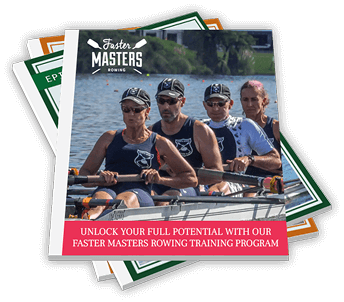What's the drill for? How to use it to improve your skills and errors to watch out for.
Timestamps
01:00 Drills and Skills webinar series
We do them for crew alignment, blade handling, technique, isolating part of the stroke or exaggerating part of the stroke to amplify its effect. The pick drill sequence - often used as part of the warmup.
01:30 The reverse pick drill
This starts at the catch - sitting at full compression. Start with a very short stroke (2 inches of the slide). Some like to start with a blade placement before this stage.
- Tapping and placement
- 2 inches stroke (5 cm)
- from catch to 3/4 slide [using one quarter of the slide]
- from catch to 1/2 slide
- from catch to 1/4 slide
- legs only rowing [note different from normal rowing]
- legs and body [straight arms]
- normal rowing including arms
04:45 What's the drill for?
1) Placing the blade before the leg drive begins. Some people assume the blade placement and leg drive are simultaneous. They are not. These are sequential movements - on the recovery your hands move upwards so the blade goes down towards the water while still moving forwards on the slide.
2) Get the correct sequencing off the catch - legs initiate the drive and back/arms follow.
06:00 How to use this drill and what the outcome is
The effect of this drill is to make a longer stroke if the blade is placed more rapidly and closer to full compression on the legs (so you miss less water). It helps to align the leg drive of the crew.
Coaches - view your crew from 45 degrees from the stern to watch their knees rising and falling through the stroke cycle. Video the crew before and after the drill - their knees press down in the power phase more in time with each other. When to coach an individual versus whole crew.
08:15 How to teach the reverse pick drill
You need to slow it right down and, if possible, in a stable environment with half the crew sitting out. So others can use square blades.
Rehearse each of the static positions slowly with the boat stationary. They must all know these first - start at the catch (blade square and buried); move to 2 inches from the catch; one quarter from the catch; half slide from the catch; three quarters slide from the catch; legs only. [Watch for people swinging their back - this is not needed at this stage.] Straight arm rowing and finally adding the arms so you end the drill at the finish position with the blade still buried under the water. Rehearse each several times.
10:30 Start to do the drill at the catch placement into the water with raising and lowering the blade in and out of the water. Watch for shoulder shrugs and folks using a back swing to place the blade rather than the arms lifting moving alone. Move onto 2 inches on the slide. Show the athletes how to push on the foot stretcher to initiate the drive phase. Emphasise the hips driving backwards and the body angle doesn't change.
11:30 Many people find it difficult to separate the leg drive from the body swing. Watch for chins lifting if this happens.
12:15 Best not to do more than 10 strokes at each position. It's a lot of load on the body. The gearing is heavy which helps them to feel the blade in the water but beware causing back strain. Inflexible athletes will find it hard to get into these positions, especially if hip / pelvis mobility is restricted.
Article on easy setup for comfort in the boat - Adapting rowing for masters physiology.
Join in the rest of the crew progressively so that the people who have done the drill are are focused on their catch and leg driven power phase - as the boat moves faster, they will find it more challenging to get the same feeling of placement and "grip" on the water before it moved. They can anticipate the catch and adjust their timing to keep the feeling of load.
15:00 Repeat the drill three times during an outing.
Teaching it on the land first using an erg can be helpful as you can get up close and position an athlete's body. How to get the athlete to learn the leg drive using hips first.
16:00 Errors to watch out for
- Using the shoulders lifting to place the blade
- The slide doesn't move the same distance from the catch as the handle does
- Drive before placement
- Wait at the catch before placing the blade
18:30 This drill benefits from frequent practice. Maybe use it in your warm up or on the erg.

